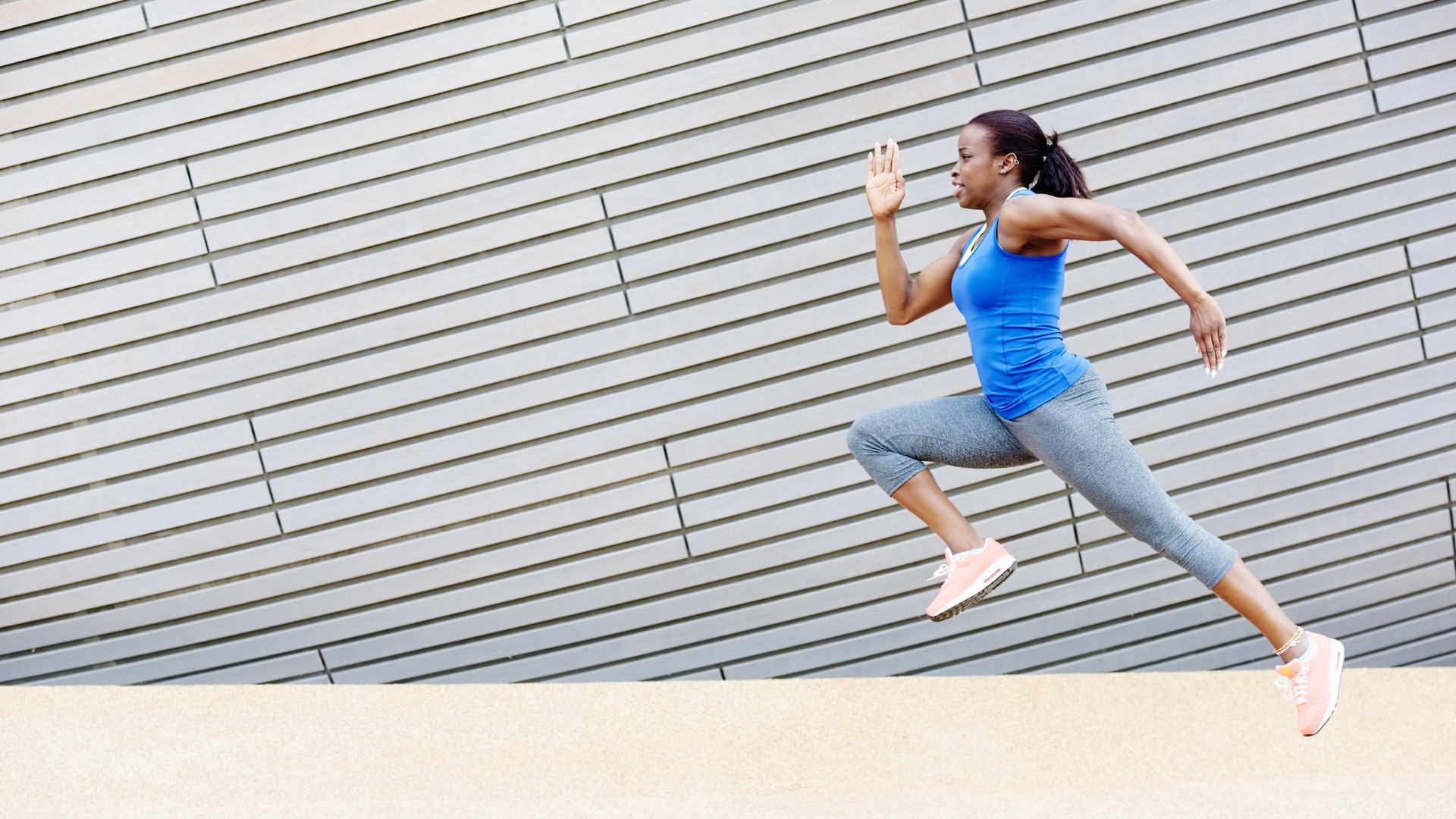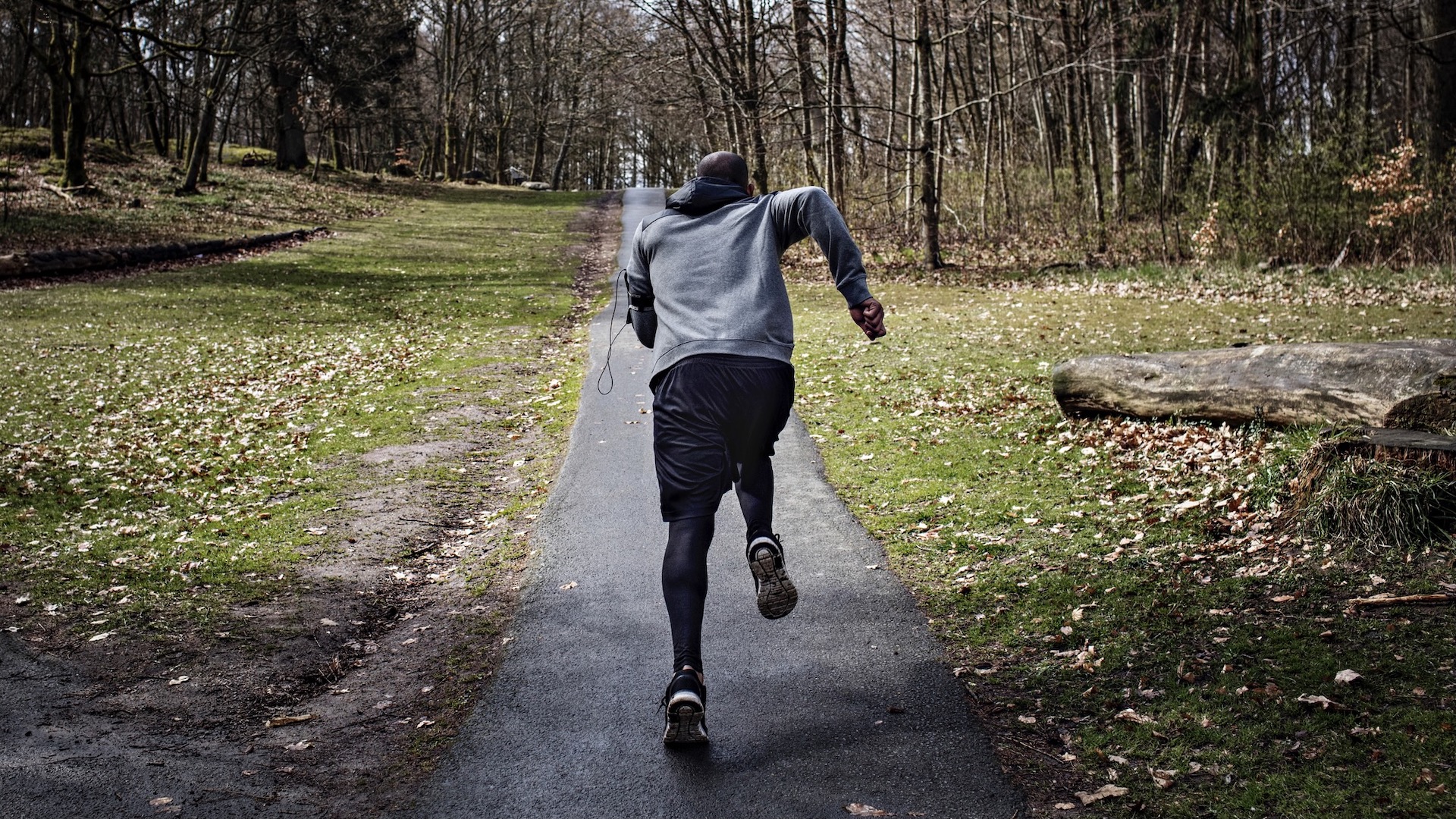Great speed workouts for distance runners: train smarter and smash your personal records
An expert guide to improving performance by running faster when training for marathon and ultra distance events

If you are training for a long distance running race, for example a marathon or an ultra distance event, you’ll need to increase the mileage that you run. That’s a given. But did you know there are also benefits for runners who include speed workouts as part of their programme?
Running faster sessions, as well as the longer, slower mileage sessions, can be key to improving your performance results as a distance runner, especially if you are already a seasoned distance runner.
Jamie Price, elite triathlete and community lead at Presca Sportswear explains that if we always run at the same speed our body becomes very efficient at running at that speed. He adds: “The only way you can change your speed zones is by pushing your body and subjecting it to a variety of speeds.”
The type of speed workout sessions for runners might include fartleks, timed track intervals, hill reps and High Intensity Interval Training (HIIT).

Speed workouts: let's look at the muscles
Lenka Chubuklieva, the founder of Rumble – London’s first green gym – explains that our muscles contain two basic types of fibres, fast twitch and slow twitch.
She continues: "Fast twitch fibres help us with speed and power, while slow twitch fibres are for endurance. Slow twitch muscle fibres are what will enable a distance runner to sustain through and what many distance runners will focus on.
“However, in addition, the training of fast twitch muscle fibres has been shown to be notably useful for distance runners on anything from a 1500-metre to a marathon. Fast twitch muscle fibres will be called upon in a variety of scenarios, including climbing hills, during surges and the end of the race ‘kick' to the finish line.”
All the latest inspiration, tips and guides to help you plan your next Advnture!
Further research also reveals that “aerobic high-intensity intervals improve VO2max more than moderate training”.
Why are speed workouts important for endurance runners?
Jamie reports that approximately 80% of overall running volume for distance running events can be done at an easy aerobic pace, with the aim of building an aerobic base.
He says: “Using the analogy of building a house, the base aerobic running is your foundation. If your aerobic block isn't solid you won't race very well and your house could collapse.
“However, if you always run at one pace you will only become efficient at running that speed. This is where speed workouts become useful.
“These speed workouts help you become more efficient at a higher pace and they are where the performance gains are made. Going back to the house analogy, this is where we build the actual house on top of the foundation.”

What speed workouts are good for runners?
There are a variety of different speed workouts suitable for distance runners.
Jamie suggests two types of speed workouts, both of which are types of interval sessions.
Fartlek sessions: Fartlek is Swedish for "speed play" and incorporates lots of changes of speed within one run. For this session, use lamp-posts as markers.
Lamp-posts are everywhere and usually placed at a constant distance from each other.
Jamies says: “A good session would be walking for the length between two lamp-posts, then jog for the next three, and then run hard for two, and repeat.
“Even during the 'downtime' - don't stop moving. This will help your body practice what's called active recovery, which is very useful for endurance running.”
Hill reps: This session helps to build muscular endurance. Pick a time from between 30 seconds to a minute and run hard up a hill for that length of time.
Once the time is up, turn around and then use the downhill as the recovery. Again it's important not to stop, to aid your body to deal with lactic acid healthily.
HIIT circuits sessions: Lenka also recommends HIIT circuits sessions. She says: “HIIT circuits usually includes bursts of explosive exercises such as plyometrics, sprinting and jumping, for example. These session are good for developing the important fast twitch muscle fibres.
“Not only is HIIT a time-efficient way to train because it provides some of the biggest training benefits in the shortest space of time, but it also boosts endurance, maximal aerobic capacity (VO2 max), lactate threshold and overall running efficiency, while strengthening and conditioning the supporting muscle groups that hold up the skeletal frame.”
Jamie recommends that a structured week of running training for runners should include one to two speed workout sessions.

5 benefits of speed workouts for distance runners
Speed workouts for distance runners have a number of benefits.
Increased muscle: While everyone will naturally lose muscle mass as they age, it’s the fast twitch muscle fibres, rather than slow twitch, that are more prone to age-related atrophy. Speedwork is the best way to maintain the fast twitch muscle fibres, which means that muscle mass can be better maintained into your later years.
Reduced risk of injury: Speed workouts help to maintain muscle and also put your muscles through a fuller range of motion, which helps to improve flexibility. This means that runners' muscles, tendons and joints should become less prone to injury in the longer-term.
Stronger bones and tendons: Bones and tendons benefit in the same way as muscles from speed workouts because they respond to more intensive training by getting stronger. A study concluded that runners were less likely to require knee or hip replacement.
Better proprioception: Without proprioception, we would not be able to stay upright while running. Proprioception is an awareness of your body’s position and movement in space so that your legs do not get tangled with even stride.
Incorporating dynamic and plyometric style moves into your speed training, such as running backward, side steps, and single-leg exercises, you will improve proprioception and, thus, your ability to run on different terrain and run longer.
Run for longer: Stronger muscles, joints and tendons, combined with improved proprioception, usually leads to improved stamina and endurance for runners.
By all accounts, speed workouts are as important to distance runners as the longer, slower foundation running sessions.
- Best trail running shoes: for speed, grip, and protection on tough terrain

Fiona Russell is a widely published adventure journalist and blogger, better known as Fiona Outdoors. She is based in Scotland and is an all-round outdoors enthusiast with favorite activities including trail running, mountain walking, mountain biking, road cycling, triathlon and skiing (both downhill and backcountry). Aside from her own adventures, Fiona's biggest aim is to inspire others to enjoy getting outside and exploring, especially through her writing. She is also rarely seen without a running skort! Find out more at Fiona Outdoors.
